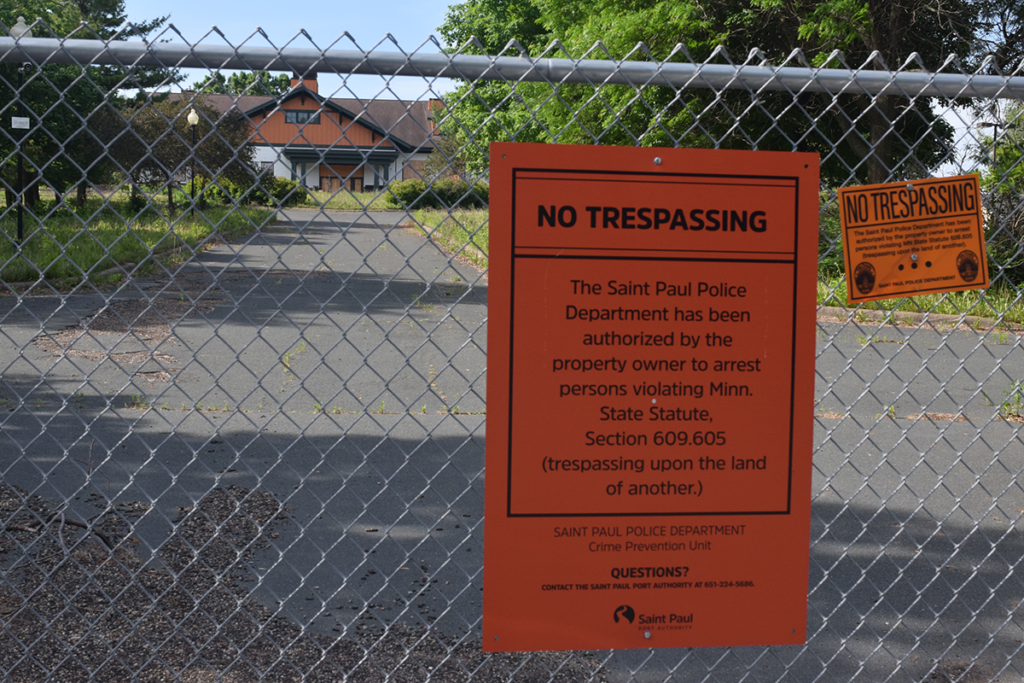Community Conversations: Hillcrest Contamination

Community Conversations: Hillcrest Contamination
On June 22, 2021 the Saint Paul Port Authority joined the Greater Eastside District Council for a community conversation about soil contamination at the former Hillcrest Golf Course. A summary of the conversation, including Q&As, can be found below.
Click here to download a handout from the meeting.
Current Situation
The former Hillcrest Golf Course has been classified as a brownfield. According to the Environmental Protection Agency (EPA), a brownfield is a property, the expansion, redevelopment, or reuse of which may be complicated by the presence or potential presence of a hazardous substance, pollutant, or contaminant. In this case, contamination came from mercury-based fungicides commonly used on golf courses from 1930s to the 1990s.
Hillcrest is one of more than 450,000 brownfields found in the United States. Like other brownfields, Hillcrest has been abandoned and poses an urban blight risk. Following clean up and redevelopment, Hillcrest will positively add to the local tax base, facilitate job growth, and provide much needed housing options.
Neighborhood Impact
Today, the Hillcrest site poses no environmental threat to the community. Natural grasses hold contaminants in place and prevent run-off. As long as we keep the site uninterrupted, it will remain safe. We have installed fencing to keep trespassers off the site.
How does Hillcrest Compare to Other Brownfield Sites?
This is the good news. Compared to other sites we’ve redeveloped, Hillcrest has relatively low levels of contamination. There were no heavy industrial uses. Furthermore, we have only found mercury contamination in the top 6″ to 24″ of soil.
Is there a Risk to the Local Water Supply?
This is a common question with an easy answer. In the case of Hillcrest, there is no impact to the City’s water supply. In fact, the water that comes out of Saint Paul taps is either from the Mississippi River or aquifers much deeper than 6″ to 24″. According to the engineering experts at Braun Intertec, aquifers in this area would be at least 100 feet below ground.
The Remediation Process
When will the Clean-up Process Begin?
The clean-up process, also known as remediation, is still a year out. With that being said, we will do all we can to keep neighbors informed. As of now, our plan is to update our website on a regular basis and communicate directly to residents through email, direct mail, and community outreach.
Click here to be added to our email list.
Safety Precautions During Remediation
We will take every precaution possible to protect the health and safety of those living near the Hillcrest site. To further ease concerns, the Minnesota Pollution Control Agency and Minnesota Department of Agriculture will regulate the process.
Will there be contamination in the air during remediation?
Dust control will be a top priority during remediation. Throughout the process, crews will use water and other best management practices to reduce dust. In addition, there will be monitoring equipment stationed around the perimeter of the property, testing dust levels.
Are there more natural methods to remediate the site?
We have reviewed several options and have not found any that would be beneficial for this project. At the same time, we are open to evaluating natural alternatives.
Remediation Funding
It is the Port Authority’s responsibility to secure funding for remediation. While this is a significant undertaking, we have a lot of expertise in this area and are optimistic in our ability to secure grants to fund as much of these costs as possible. Potential funding sources include:
Is TIF an Option for Remediation?
No. However, TIF will likely be available for the housing component of the Hillcrest redevelopment plan.